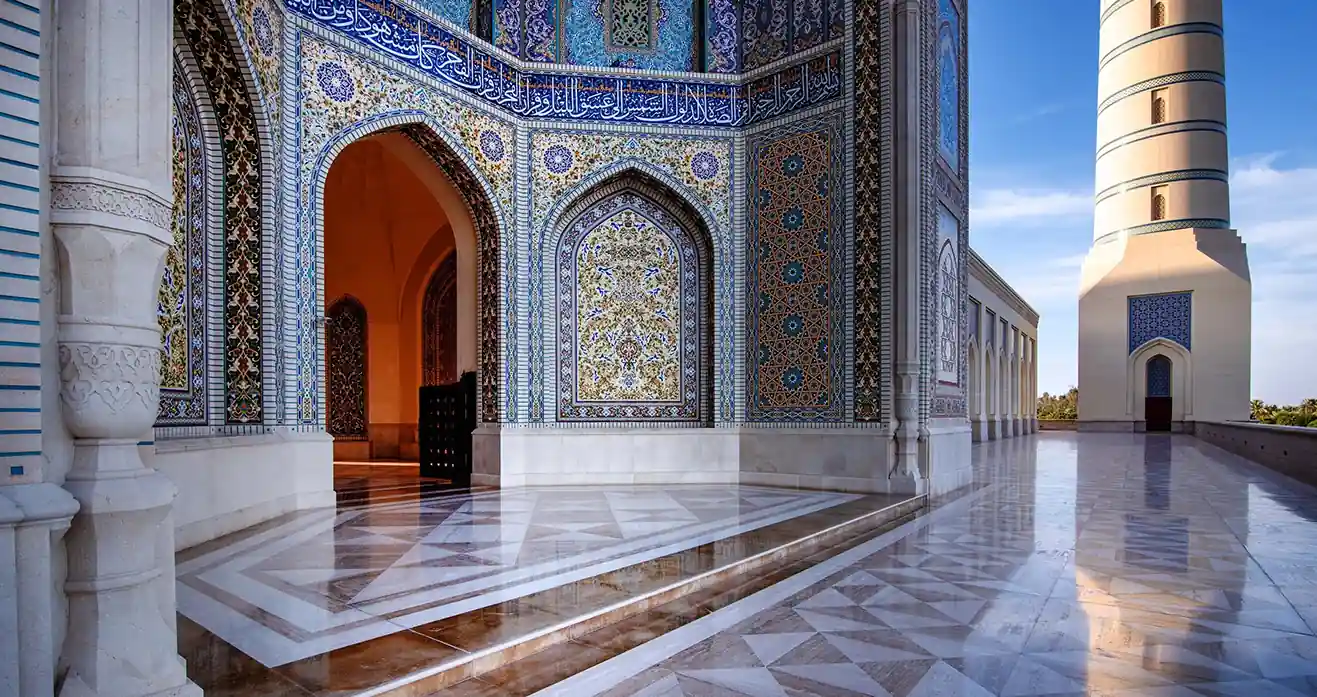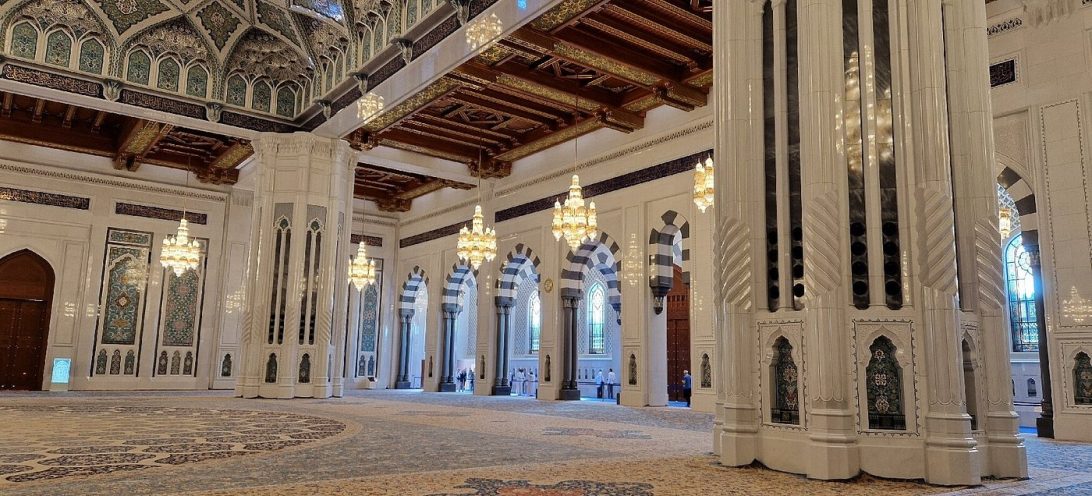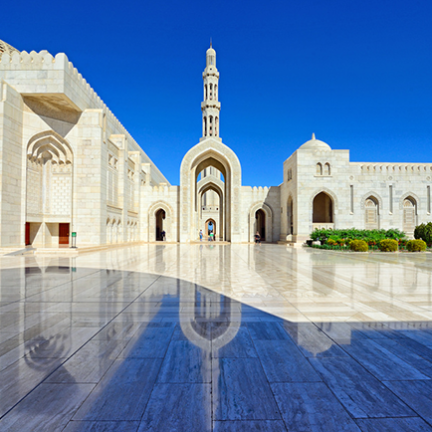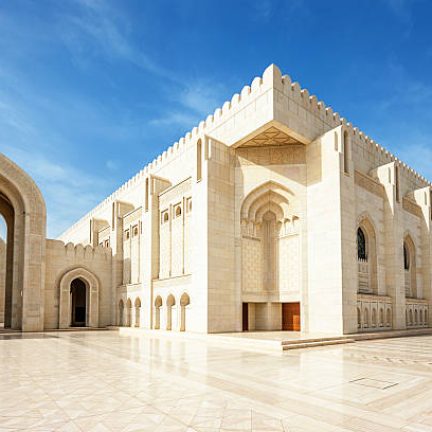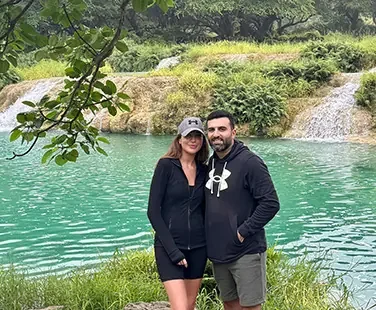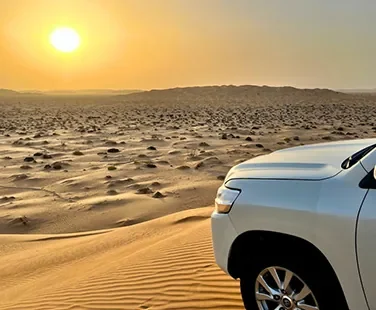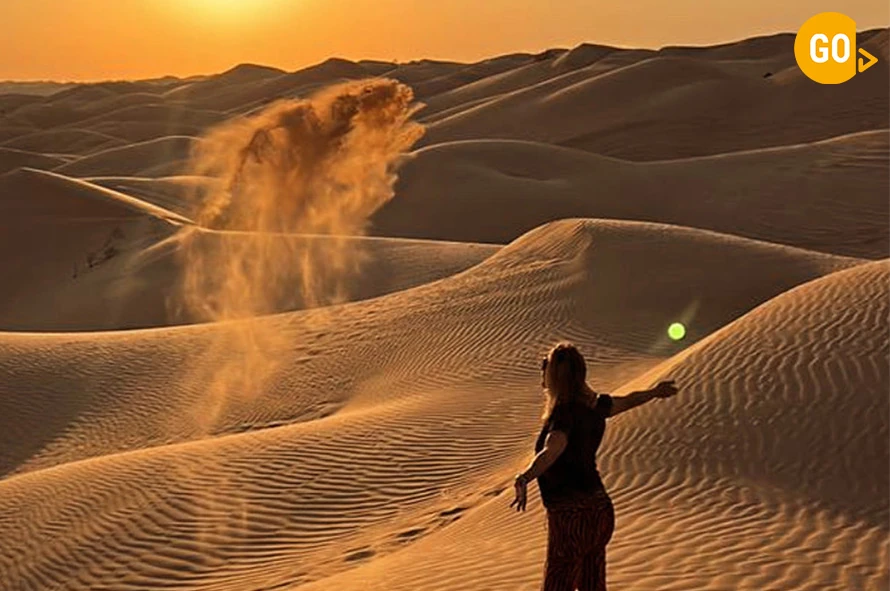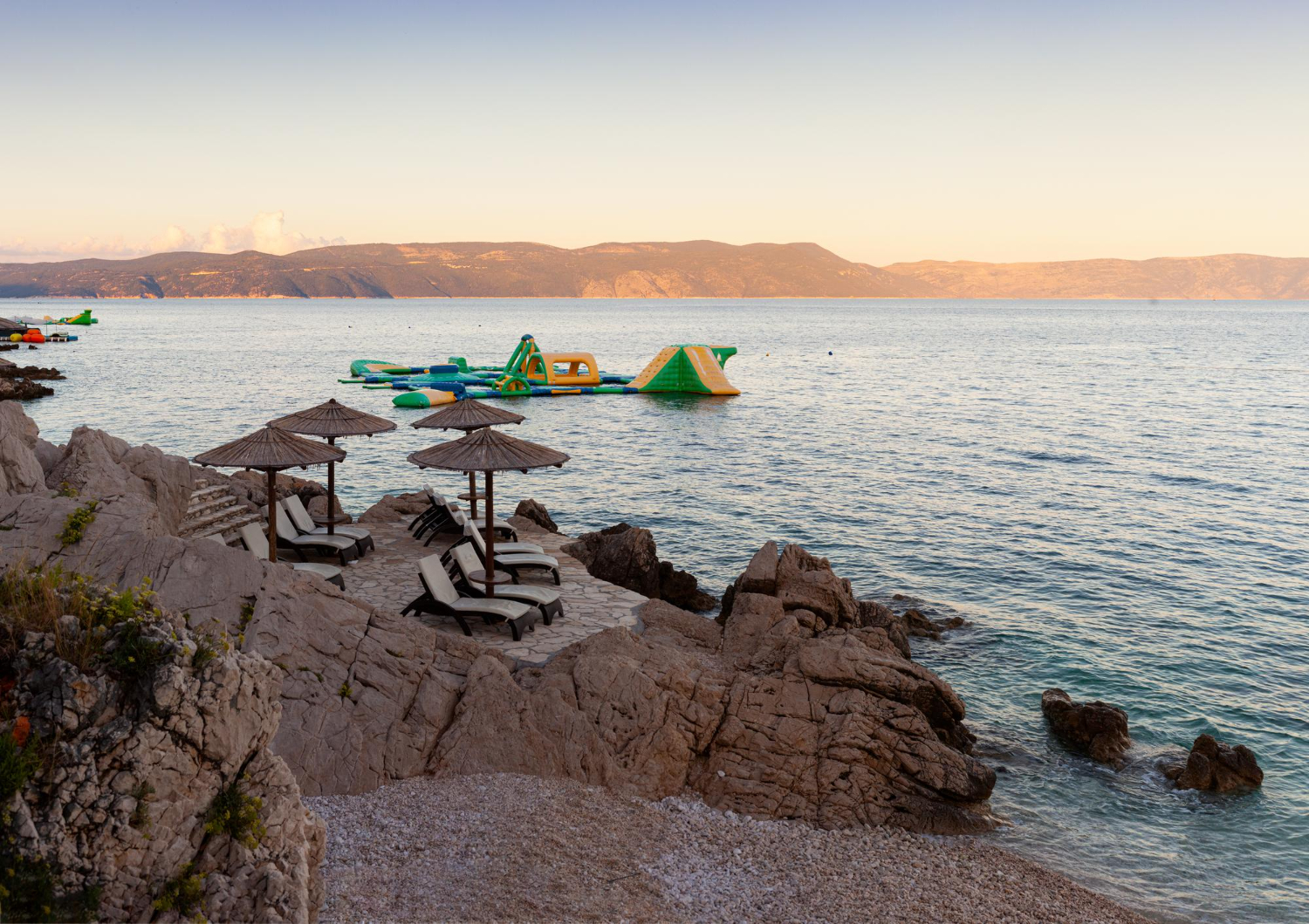Essential Visitor Information for Sultan Qaboos Grand Mosque
Let me walk you through what you should know before you visit this magnificent mosque. My multiple visits have taught me everything that will make your trip smooth and memorable.
1. Opening hours and best time to visit
The Sultan Qaboos Grand Mosque Muscat welcomes visitors from 8:00 AM to 11:00 AM, Saturday through Thursday. Muslim visitors can enter any time during the day, but non-Muslim tourists can only visit during morning hours. My tip is to arrive right at 8:00 AM when the doors open. You’ll avoid the mid-morning crowds and get a more peaceful experience.The weather is most comfortable from October to April. Temperatures stay between 20-30°C (68-86°F). You’ll appreciate these mild conditions as you walk around the so big grounds in modest clothing.
2. Dress code requirements and rental services
The mosque takes its dress code seriously. Here’s what you need to wear:
- Women must wear long sleeves reaching the wrists, ankle-length bottoms, and head covering
- Men need long pants and long-sleeved shirts
- All visitors must remove shoes before entering prayer areas
- Clothing should be loose-fitting and non-transparent
The mosque’s entrance has rental services that provide abayas (traditional robes) if you’re not dressed appropriately. These rentals cost about 2.5 OMR. You’ll save time and money by bringing your own suitable clothing and head scarf.
3. Guided tour options and costs
Taking a guided tour turned out to be one of our best decisions. The mosque gives you two main choices:
| Tour Type | Cost (OMR) |
|---|---|
| Live Guide | 5 per person |
| Audio Guide | 2.5 |
The mosque’s entrance is completely free – an incredible value. Our guide gave an explanation about the mosque’s architecture, history, and spiritual significance. The tour ended with traditional Omani coffee and dates, which helped us learn about the local culture.
Bring some cash if you want these guide services. You can explore on your own, but the guided experience is a great way to get details you might miss otherwise.
Customize your Trip With Go Safari Salalah
Are our Salalah City Tour places not fulfilling enough? Contact us and tailor a city tour to your aspirations and desires.
Architectural Magnificence and Design Elements
The architectural symphony of Sultan Qaboos Grand Mosque Muscat unfolds before my eyes as I step through its grand entrance. This magnificent religious complex covers 416,000 square meters, making it one of the largest I’ve ever seen.
1. Blend of Islamic and Omani architectural styles
The mosque’s remarkable fusion of architectural traditions creates its unique character. My exploration reveals several distinct influences:
- Ottoman grandeur in the main structure
- Persian touches in the pointed arches
- Indian Moghul elements in decorative details
- Traditional Omani features in the elevated platform design
- Byzantine influences in select archways
Rich red-brown and pristine white marble clad the mosque’s exterior, creating a stunning contrast against Muscat’s blue skies. The sort of thing I love about this mosque is its Riwaqs – covered arcades that connect different spaces. These elegant vaulted archways stretch as far as the eye can see.
2. Significance of the five minarets
Sultan Qaboos Grand Mosque Muscat minarets speak their own architectural language. Here’s how they stand:
| Minaret Position | Height | Significance |
|---|---|---|
| Main Minaret | 91.5 meters | Represents leadership in faith |
| Corner Minarets (4) | 45 meters each | Symbolize the pillars of Islam |
These magnificent towers showcase traditional Egyptian style. Their intricate decorations blend Omani and Persian influences to create a distinctive visual identity.
3. Courtyard and garden design features
Cream marble tiles pave the inner courtyard, perfectly matching the white sandstone of the prayer hall exteriors. Beautiful bronze lanterns with stained-glass panels hang between the arches. They cast mesmerizing patterns when lit.
Open arches line the external hallways around the courtyard. These corridors stretch 240 meters on both north and south sides. Sunlight creates an ever-changing dance of light and shadow throughout the day. The space offers a peaceful transition from the outside world into this spiritual sanctuary.
The mosque complex’s gardens act as natural buffers between city life and sacred space. These grounds create an atmosphere of serenity that prepares visitors for the main prayer areas.
Inside the Main Prayer Hall
The main prayer hall’s grandeur leaves me speechless. Sunlight streams through stained glass windows and creates an otherworldly atmosphere. This space stands out as the most stunning area of Sultan Qaboos Grand Mosque Muscat.
1. World's second-largest hand-woven carpet
My eyes fall upon a remarkable feat of craftsmanship – the world’s second-largest hand-woven carpet. The numbers behind this masterpiece tell an amazing story:
| Carpet Statistics | Details |
|---|---|
| Total Area | 4,343 square meters |
| Creation Time | 4 years |
| Number of Knots | 1.7 billion |
| Weight | 22 tons |
| Artisans Involved | 600 skilled weavers |
The carpet’s central medallion catches my attention. Its design draws inspiration from Isfahan’s Sheik Lutfullah Mosque’s ceiling. Each oval motif grows larger than the last and creates a stunning illusion of a concave dome that mirrors the actual dome above.
2. Swarovski crystal chandelier
The spectacular Swarovski chandelier commands attention from its perch on the prayer hall’s ceiling. This lighting masterpiece boasts:
- 14 meters in height and 8 meters in diameter
- 1,122 halogen lamps that cast a warm, dreamlike glow
- 600,000 pieces of crystal glass
- Gold-plated metalwork that enhances its splendor
- 8 tons of weight suspended from the central dome
3. Intricate marble work and calligraphy
The prayer hall’s splendor goes beyond these centerpieces. The 24,400 square meters of marble flooring captivates me with its seamless geometric patterns. Different marble types blend together harmoniously – from classic travertine to Persian varieties – and create a stunning mix of colors and textures.
Sacred verses appear with incredible precision in masterful calligraphy, especially above the mihrab. The artisans’ skill shines through their use of various marble colors – green, beige, brown, and mahogany. These stones come from India, Oman, Italy, and Egypt and form intricate designs.
This sacred space tells countless stories of artistic excellence and dedication. The hall’s acoustics amaze me as they carry prayers with perfect clarity throughout the vast space.
Cultural and Spiritual Significance
My visits to Sultan Qaboos Grand Mosque Muscat have shown me its influence reaches way beyond its architectural beauty. The sacred space radiates spiritual energy and cultural vitality that makes it the heart of Omani religious life.
1. Role in Omani religious life
The mosque’s ability to unite the community amazes me. It welcomes thousands of worshippers for daily prayers as Oman’s main mosque. The Friday prayers reveal its true spiritual power. People come together to hear the khutbah (sermon) and pray as one, which deepens their commitment to the community.
The mosque stands at the center of major Islamic festivals like Eid al-Fitr and Eid al-Adha. Families gather here to mark special moments, from weddings to their children’s first Quran recitations. These celebrations show the deep bond between the mosque and life’s milestone events in Oman.
2. Islamic educational center activities
The educational programs at Sultan Qaboos Grand Mosque Muscat stand out. Here’s how the mosque serves as a center of learning:
| Program Type | Description | Frequency |
|---|---|---|
| Quranic Studies | Traditional teaching of Quran recitation and interpretation | Daily |
| Islamic Law | Classes on Ibadhi jurisprudence and principles | Weekly |
| Arabic Language | Classical Arabic instruction for religious texts | Bi-weekly |
| Religious Sciences | Advanced studies in Islamic theology | Monthly |
These programs shine because they use an integrated approach that blends traditional Islamic education with modern teaching methods. They preserve the close teacher-student relationship that has shaped Islamic education through centuries.
3. Cultural exchange programs
The mosque’s work to promote cultural understanding has left a lasting impression on me. Its Islamic Information Center and library build bridges between different cultures and faiths. Some notable initiatives include:
- Interfaith dialog sessions to promote mutual understanding
- Cultural awareness programs for international visitors
- Special exhibitions showcasing Islamic art and calligraphy
- Educational tours for school groups and diplomats
- Multilingual resources about Omani Islamic heritage
The library holds an exceptional collection of Arabic and English books about Omani history, literature, politics, and religion. The sort of thing I love is how these resources help visitors understand Ibadhi Islam’s unique aspects and its peaceful relationship with other Islamic schools of thought.
The Sultan Qaboos Grand Mosque Muscat truly reflects Oman’s famous hospitality. The core team welcomes visitors from all backgrounds warmly, making it a genuine hub for cultural exchange and understanding in Muscat.
Photography and Exploration Tips
I’ve spent countless hours as a passionate photographer capturing the beauty of Sultan Qaboos Grand Mosque Muscat. These insider tips will help you create stunning images while respecting this sacred space.
1. Best photo spots and angles
You’ll find these spots perfect to capture the mosque’s grandeur:
- The main courtyard – Frame your shot through the arches to create dramatic views
- The garden viewpoint – You can capture all five minarets against the sky
- The entrance plaza – This spot showcases the mosque’s impressive scale
- The 360-degree viewing area – Great panoramic shots await here
- The marble corridors – Light and shadow play beautifully here
The corners of the courtyard give you unique angles that highlight intricate architectural details and help avoid typical tourist shots.
2. Lighting considerations
The mosque looks different throughout the day. Here’s my guide to getting the best shots:
| Time of Day | Lighting Effect | Best Subjects |
|---|---|---|
| Early Morning (8-9 AM) | Soft, golden light | Exterior facades, minarets |
| Mid-morning | Bright, clear light | Interior details, carpet |
| Late Afternoon | Warm tones | Courtyard, archways |
| Golden Hour | Dramatic shadows | Full exterior shots |
Oman’s intense summer heat makes early morning the best time to shoot as the light is soft and flattering. The marble surfaces create strong reflections at midday, so you’ll need to adjust your exposure.
3. Respectful photography guidelines
These essential protocols will help you photograph this magnificent mosque:
- Ask First: Get permission before photographing people, especially during prayer times
- Timing Matters: Early arrival lets you capture empty spaces without disturbing worshippers
- Equipment Considerations:
- Bring a wide-angle lens for architectural shots
- Use a tripod only in designated areas
- Keep camera sounds muted
Patience is key at the Sultan Qaboos Grand Mosque Muscat. A few extra minutes of waiting can give you the perfect shot when crowds thin out or the light changes.
Pro Tip: The turquoise ablution fountains look stunning at mid-day when sunlight brings out their vibrant hues. Just keep a respectful distance from worshippers using these facilities.
Weekday visits offer fewer tourists and more time to compose shots and try different angles without feeling rushed.
Note that while this mosque is a photographer’s dream, it remains a place of worship first. Your photography should never interfere with religious activities or disturb the peaceful atmosphere that makes this place special.
While Ayn Athum is undoubtedly a highlight, the Dhofar region offers many other attractions worth exploring. Visitors can extend their stay to experience the rich cultural and natural diversity of southern Oman.
Conclusion
Sultan Qaboos Grand Mosque Muscat represents much more than a religious landmark. My visits have revealed its position as the heart of Omani culture, spirituality, and architectural excellence. This magnificent structure captivates visitors with its blend of traditional Islamic design and modern grandeur. The stunning hand-woven carpet and a mesmerizing Swarovski chandelier in the main prayer hall showcase its grandeur.
The mosque naturally combines its roles as a place of worship, an educational center, and a cultural bridge. Visitors can admire the intricate marble work, join cultural programs, or photograph its architectural beauty. These experiences are a great way to get deeper insights into Omani heritage.
The best time to visit is during morning hours. Appropriate dress code will enhance your experience at this sacred space. The mosque’s peaceful atmosphere, architectural splendor, and cultural significance create a lasting impression that remains with you well beyond your time in Muscat.
General Questions
Visitors should wear modest attire that covers both arms and legs and should avoid tight-fitting clothes. Women and girls aged seven and older are required to cover their hair. Abayas and scarves are available for rent at the mosque's cafe and gift shop for a fee of OR2.
For Muslim visitors, the mosque is generally open throughout the day. Non-Muslims are welcome to visit from 8 AM to 11 AM, Saturday through Thursday. The mosque is closed to non-Muslim visitors on Fridays.
The mosque is renowned for its large central dome, which measures 50 meters in diameter and stands 34 meters tall, making it one of the largest domes globally. Additionally, the mosque features five minarets, with the tallest reaching 91.5 meters and the other four at 45 meters each, representing the five pillars of Islam.
Men are required to wear long pants and shirts that cover the arms. Tight or revealing clothing is not permitted. This dress code is in place to respect the religious and cultural sanctity of the mosque.

